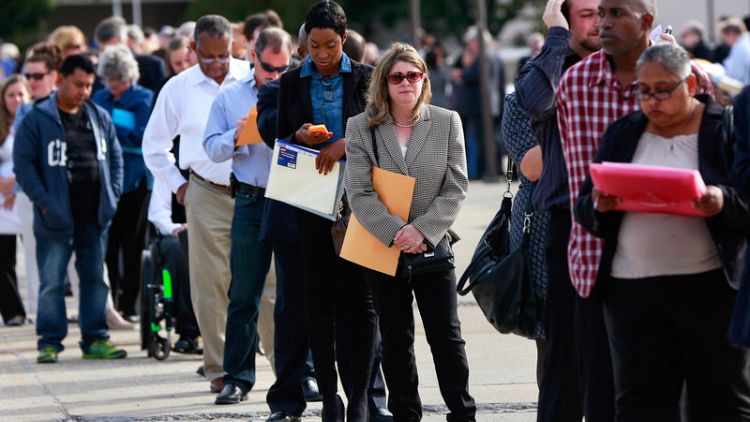By Lucia Mutikani
WASHINGTON (Reuters) - U.S. labour costs rose at their slowest pace in 1-1/2 years in the second quarter, the latest indication of benign inflation that could allow the Federal Reserve to cut interest rates on Wednesday for the first time in a decade.
The Employment Cost Index, the broadest measure of labour costs, increased 0.6%, the smallest gain since the fourth quarter of 2017, the Labor Department said on Wednesday. The ECI had increased 0.7% for two straight quarters.
In the 12 months through June, the ECI rose 2.7%, slowing from a 2.8% increase in the year through March.
Economists polled by Reuters had forecast the ECI would rise 0.7 percent in the April-June period.
The ECI is widely viewed by policymakers and economists as one of the better measures of labour market slack. It is also considered a better predictor of core inflation. Labour costs picked up over 2018 as a tightening labour market pushed up wage growth. The pace of increases has since moderated somewhat.
The report came on the heels of data on Tuesday showing a key measure of inflation increased 1.6% in the 12 months to June, continuing a pattern of slow gains that have seen it undershoot the Fed's 2% target this year.
Tame inflation and slowing economic growth are expected to encourage U.S. central bank officials to cut rates when they conclude a two-day policy meeting later on Wednesday.
The economy, which is cooling as the boost from last year's $1.5 trillion tax cut package fades, is facing headwinds from a bitter trade war between the United States and China, slowing global growth and Britain's potential disorderly departure from the European Union.
Prices of U.S. Treasuries were trading slightly higher on Wednesday while the dollar <.DXY> was largely unchanged against a basket of currencies as traders awaited the Fed's decision on rates. U.S. stock index futures were up.
JOB GAINS
In the second quarter, wages and salaries, which account for 70 percent of employment costs, rose 0.7% after rising by the same margin in the prior period. Wages and salaries were up 2.9% in the 12 months through June, matching the gain in the year through March.
Private sector wages and salaries rose 0.6% in the second quarter after increasing 0.7% in the first quarter. They were up 3.0% in the 12 months through June after rising by the same margin in the year through March.
State and local government wages and salaries rose 0.5% after advancing 0.6% in the first quarter.
Benefits for all workers rose 0.5% in the April-June quarter, slowing from the first quarter's 0.7% rise. The moderation reflected a 0.4% decline in benefits in the natural resources, construction and maintenance industry.
Benefits in the manufacturing industry rose only 0.5% after surging 0.9% in the first quarter.
Overall, benefits were up 2.3% in the 12 months through June, the smallest gain since March 2017, after rising 2.6% in the year through March.
Separately on Wednesday, the ADP National Employment Report showed private payrolls increased by 156,000 jobs in July after rising 112,000 in June. The ADP report, which is jointly developed by Moody's Analytics, has greatly understated the private payrolls component of the government's employment report in each of the last two months.
Economists polled by Reuters are looking for nonfarm employment to have increased by 162,000 jobs in July after surging by 224,000 in June. Job gains averaged 172,000 per month in the first half of this year, below the 223,000 monthly average in 2018.
The pace of job gains, however, remains above the roughly 100,000 per month needed to keep up with growth in the working-age population. The unemployment rate is expected to have held steady at 3.7% in July.
(Reporting by Lucia Mutikani; Editing by Paul Simao)



